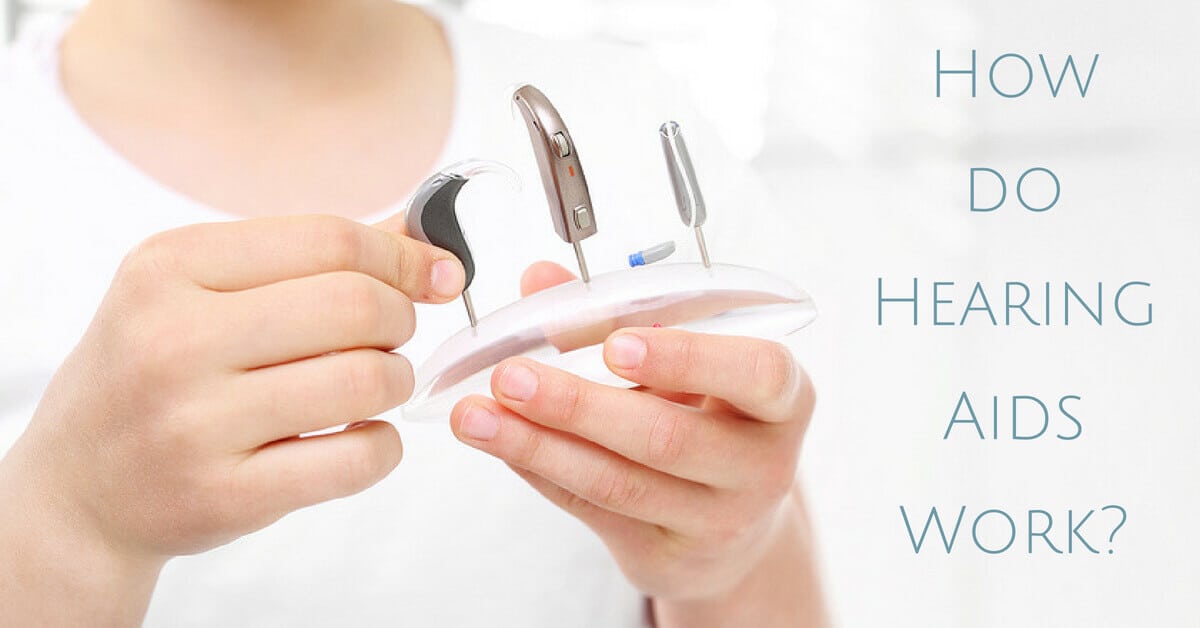
541-678-5698

How do hearing aids work?
Hearing aids are small, electronic devices that amplify some sounds. This can make it easier for people with a range of hearing needs, from moderate to severe, to distinguish unique sounds throughout their day. This allows people with hearing loss to hear in quiet places as well as loud and noisy places with many different kinds of sounds occurring at once. Hearing aids are a common solution to many different kinds of hearing needs. It is important to take some time to understand the wealth of information about how hearing aids work, and what styles of hearing aids are best for what kinds of hearing needs.
Hearing Aid Technology
Many things have changed in the world of hearing aids over the last several decades. The earliest hearing aid devices were large and often came with a variety of problems, including (expensive) batteries that would die quickly and terrible feedback sounds. Thankfully, there have been impressive technological developments that have allowed for smaller and more refined hearing aids. These devices are more discrete, have longer-lasting batteries, and have virtually no problems with feedback or occlusion. So, while it is important to consider cost when considering a hearing aid, it is also very important to consider factors such as the level of hearing loss in question. This will affect what styles of hearing aids are most suitable.
No matter the style of hearing aid in question, there are three basic parts to any given hearing aid: they each include a microphone, an amplifier, and a speaker. Sounds are received through the microphone, where the sound waves are converted to electrical signals. These are then sent to the amplifier, which, as the word implies, amplifies the power of the signals that are then sent through the ear canal. We all have hair cells in our inner ear canal, cells that are in charge of detecting the vibrations of sound. People experiencing hearing loss typically have diminished hair cells, meaning that they cannot properly detect sound vibrations. Because hearing aids amplify sound vibrations, they make it easier for those remaining hair cells to capture the vibrations. (Hearing aids do not, however, make it possible to regain lost hearing. They can only partially modify the hearing capabilities a person currently has.)
The Different Hearing Aid Styles
There are several different styles of hearing aids that riff on those basic parts, and each of them have pros and cons depending on the individual’s hearing needs. Some of the most common hearing aids have components that sit inside of your ear canal that are connected through a small, thin tube to a device that rests comfortably behind your ear. These include behind the ear (BTE), receiver in the ear (RITE), and receiver in the canal (RIC) hearing aids—they have great battery power and serve people with moderate to severe hearing loss.
There are also hearing aids that fit entirely inside of your ear canal. These smaller, in-ear hearing aids are typically categorized as Invisible-in-Canal (IIC) and Completely-in-Canal (CIC) styles. Because of their smaller size and power capabilities, IIC and CIC hearing aids are ideal for people with moderate hearing loss and people who want more discrete hearing aids.
There are larger, powerful devices for people who have more complex hearing assistance needs. The In-the-Ear (ITE) and In-The-Canal (ITC) hearing aid sit within the “ear bowl,” the large recess of the ear. These custom-fit hearing aids are frequently come in a variety of colors to match your skin tone, aiming to make the devices as discrete as possible. These slightly larger hearing aids are great for people with severe hearing loss because they have larger and stronger batteries that can last longer than, say, IIC and CIC hearing aids. ITE and ITC hearing aids are also some of the most technologically advanced hearing aids, and frequently include supplements like wireless connectivity, Bluetooth compatibility, directional microphones, and volume control wheels.
Treating Hearing Loss with Hearing Aids
When combining hearing aids with careful consideration of your surroundings, you can achieve the best hearing possible for you. More than this, integrating hearing aids into your everyday life can drastically improve communication with those you love, can decrease the risk of social isolation, anxiety, and depression. In short, hearing aids can generally improve your overall well-being.
To learn more about hearing aid options and how they can support your hearing, contact us at Pacific Northwest Audiology today.
© 2018 Pacific Northwest Audiology LLC
Pacific Northwest Audiology, 2205 NW Shevlin Park Rd., Bend Oregon 97703
(541) 678-5698, [email protected]
Doctors of Audiology | Board Certified Audiologists
